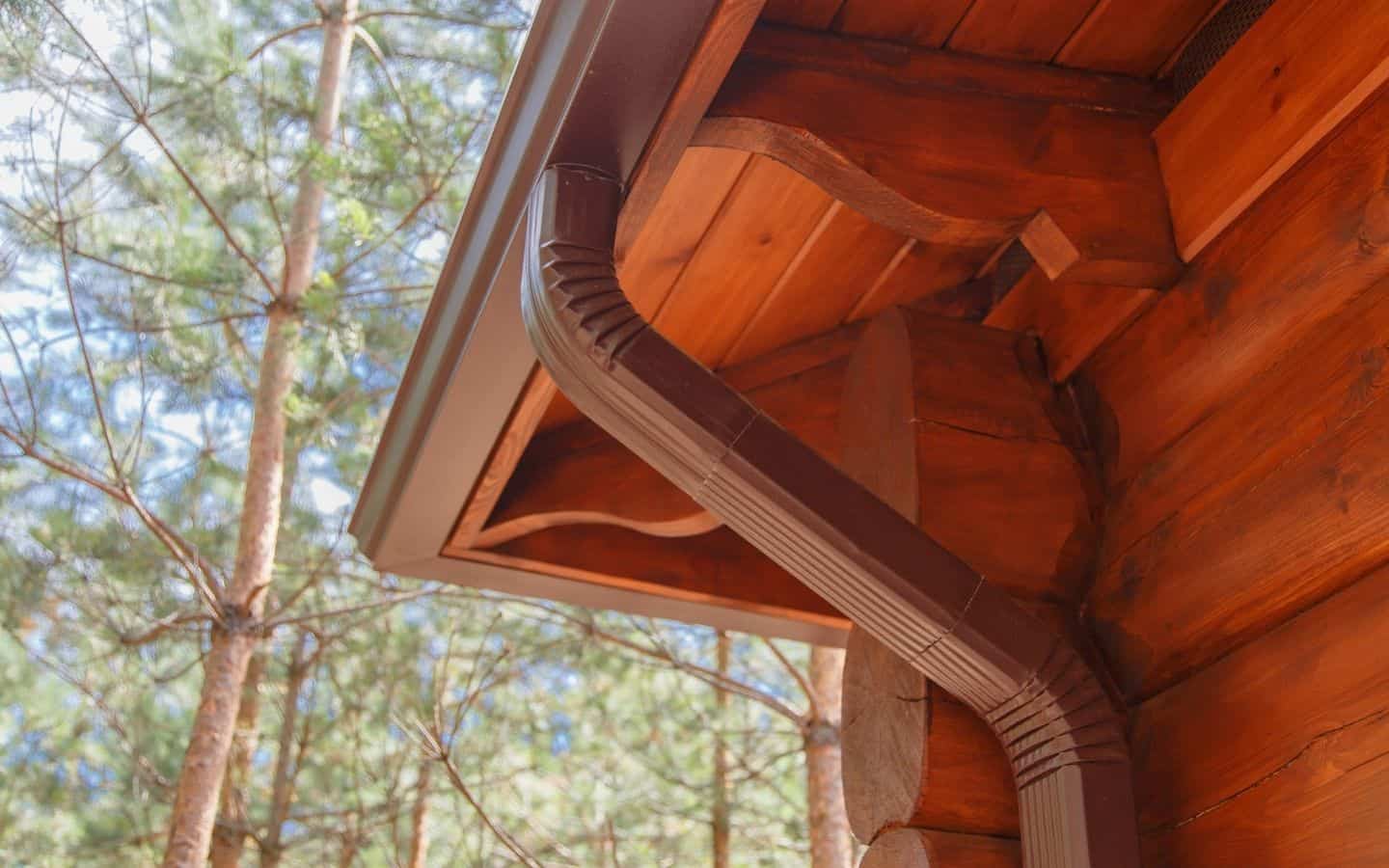There are few things as beautiful as fall’s colorful leaves surrounding your log cabin. While you soak up the scenery, though, remember that winter’s cold, snowy weather won’t be far behind!

Before you settle down in your cozy cabin this winter, follow these six steps to prepare your log home for harsh weather.
Spruce Up the Exterior Walls
Clean Your logs:
Before winter sets in, give your log home’s exterior walls a thorough cleaning. That will help to remove accumulated dirt, dust, and grime.
Check Your Stain:
Look for signs that the logs’ stain has faded and the topcoat is losing its effectiveness. If either coating looks compromised, apply fresh coats of stain and topcoat while temperatures are still warm enough.

Seal Any Gaps:
Closely examine the seals between the logs. Torn or stretched seals may indicate shrinkage or wood movement, and provide opportunities for water and insects to enter your home. Don’t let them do it — fix these issues with a caulking gun.
Check the Foundation and Roof
If you have leaves, grass, or other vegetation around your home’s foundation, remove it so that it doesn’t attract rodents. And repair cracks around the foundation itself.
Carefully check the roof for access spots or holes. Squirrels, raccoons, and bats would happily spend the winter in your attic. If necessary, call an experienced pest control service to get the animal(s) out.
Clear Gutters and Downspouts
Outside, remove leaves and twigs from the gutters. Although it’s a tedious job, it will help to prevent potentially disastrous ice dams. Next, forcefully spray water through the downspouts to clear out debris.

Get the Fireplace and Chimney Ready
One of the best parts of winter is sitting next to a warm fireplace or wood stove on a cold winter’s night!
Clean Your Chimney
It’s important to keep the chimney clean, as soot and creosote can build up over time. Because creosote is very flammable, you increase the risk of a chimney fire (or a potential house fire) as more and more creosote collects in your chimney.
Before that happens, hire a chimney sweep to remove the soot and creosote.

Check Your Damper
Ensure your fireplace damper opens and closes properly. If the damper doesn’t close tightly, heat travels up the chimney instead of heating your cabin.
Service Smoke and Carbon Monoxide Detectors
With winter’s frigid temperatures just around the corner, you’ll probably want to use a fireplace or wood stove to stay warm.
If you’re working in the garage or woodworking shop, you might crank up a portable propane heater.
You’ll naturally want to be alerted of any smoke or carbon monoxide (CO) hazards in your home or workshop. So a handy rule is to change your smoke and CO detector batteries when daylight savings time ends.
Afterward, test all detectors to ensure that they’re operational.
Protect Your Home’s Plumbing Pipes
To minimize the chances of frozen pipes, provide insulation for all exposed plumbing pipes. If your log home has a crawlspace, also insulate pipes there. Know your water main’s location so you can turn it off quickly in an emergency.
Whether it’s your first winter in your cabin or if you’ve been through many, preparation is key!
Here’s a few more helpful resources for the season:

Leave a Reply